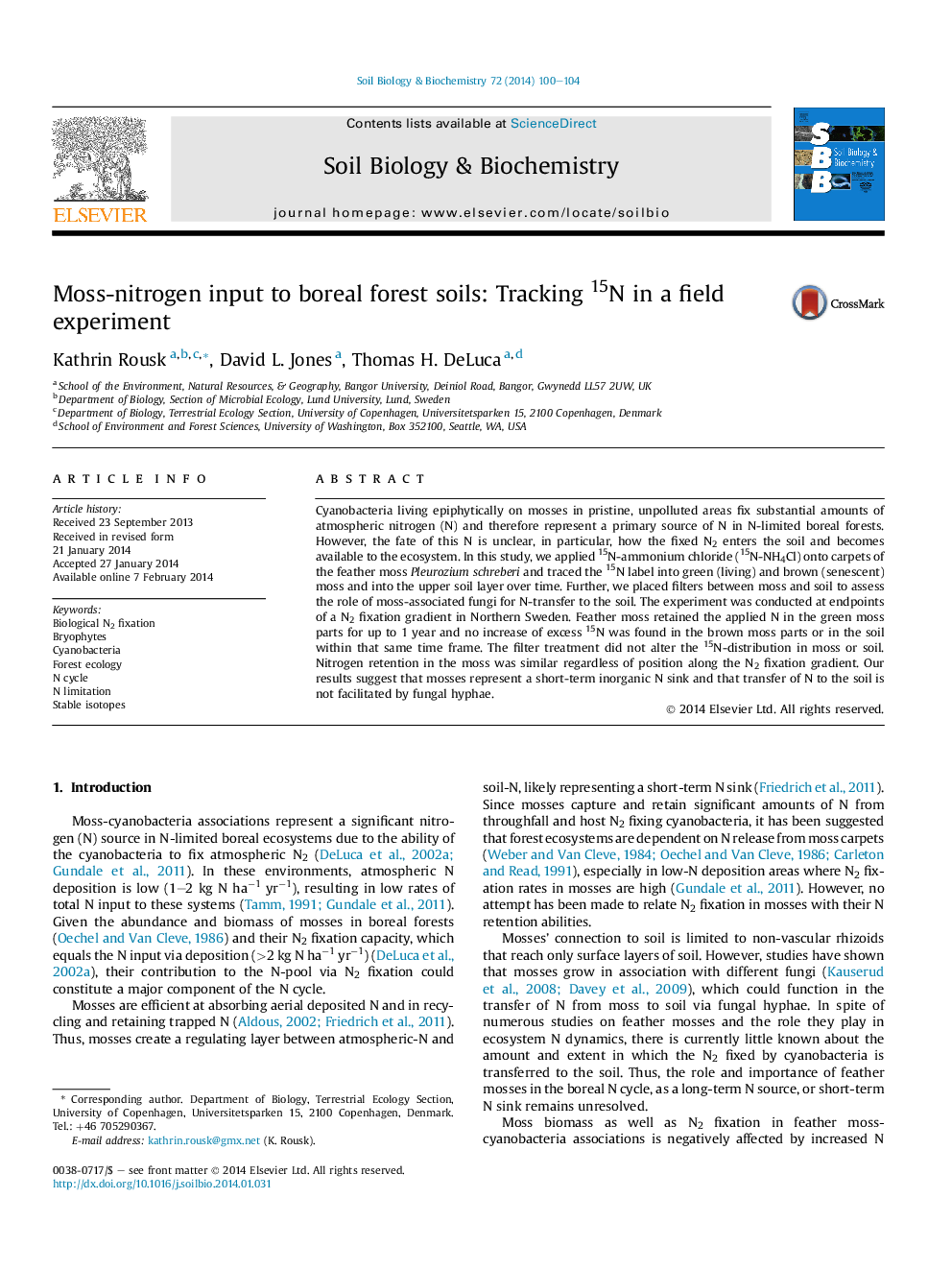| Article ID | Journal | Published Year | Pages | File Type |
|---|---|---|---|---|
| 8364858 | Soil Biology and Biochemistry | 2014 | 5 Pages |
Abstract
Cyanobacteria living epiphytically on mosses in pristine, unpolluted areas fix substantial amounts of atmospheric nitrogen (N) and therefore represent a primary source of N in N-limited boreal forests. However, the fate of this N is unclear, in particular, how the fixed N2 enters the soil and becomes available to the ecosystem. In this study, we applied 15N-ammonium chloride (15N-NH4Cl) onto carpets of the feather moss Pleurozium schreberi and traced the 15N label into green (living) and brown (senescent) moss and into the upper soil layer over time. Further, we placed filters between moss and soil to assess the role of moss-associated fungi for N-transfer to the soil. The experiment was conducted at endpoints of a N2 fixation gradient in Northern Sweden. Feather moss retained the applied N in the green moss parts for up to 1 year and no increase of excess 15N was found in the brown moss parts or in the soil within that same time frame. The filter treatment did not alter the 15N-distribution in moss or soil. Nitrogen retention in the moss was similar regardless of position along the N2 fixation gradient. Our results suggest that mosses represent a short-term inorganic N sink and that transfer of N to the soil is not facilitated by fungal hyphae.
Keywords
Related Topics
Life Sciences
Agricultural and Biological Sciences
Soil Science
Authors
Kathrin Rousk, David L. Jones, Thomas H. DeLuca,
